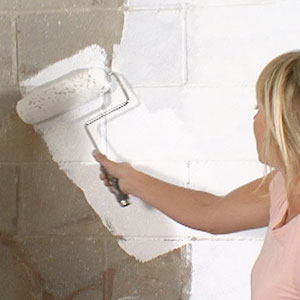
Resources
- Home
- Cheap Waterproof Walls
- How to Waterproof Basement Walls
- How to Waterproof Walls
- Waterproof Baesment Walls
- Waterproof Basement Walls
- Waterproof Bathroom Walls
- Waterproof Brick Walls
- Waterproof Concrete Walls
- Waterproof Exterior Walls
- Waterproof Foundation Walls
- Waterproof Garage Walls
- Waterproof Kitchen Walls
- Waterproof Wall Paint
- Waterproof Wall Panels
- Waterproof Walls Coating
- Waterproof Walls Companies
- Waterproof Walls Covering
- Waterproof Walls DIY
- Waterproof Walls FAQs
- Waterproof Walls Prices
Waterproof Walls DIY
Waterproofing your basement walls is the best way to prevent mold growth and other problems related to moisture. While you can actually waterproof any of the walls in your home, the basement is the most problematic area for most homeowners. If you're keeping a close eye on your expenses, you can save money by taking the DIY approach. Because the process of waterproofing walls is fairly simple, you should have no problem doing it on your own.
Preparation
Before you begin waterproofing the walls, you need to address any existing problems in your basement. If you've noticed any seepage or leaks throughout your basement, you will want to fix these problems. Both of these issues can be caused by your foundation settling, poor workmanship or excessive water pressure coming from your home's exterior. Once you figure out what's causing your problems, you can take care of any cracks or holes that are in your basement.
For anything other than very thin hairline cracks, it's important to patch them before you start waterproofing the walls. Failing to do so can reduce the effectiveness of your waterproofing job. If the cracks or holes you need to patch are on the smaller end of the spectrum, you can take care of them with standard epoxy or latex cement. For larger cracks and holes, it's a good idea to use mortar to patch them. Another advantage of taking the DIY approach is you can save even more money by creating your own mortar. This is done by mixing a small amount of water with two parts fine sand and one part cement.
Waterproofing Your Walls
After you take care of any existing problems with your walls, you can begin the DIY waterproofing process by spraying the walls with a fine mist of water. This initial step will ensure that the waterproofing you apply to the walls fully adheres and forms the seal that's necessary for protecting against moisture. The most effective way to apply waterproofing to a wall is to use a stiff brush. You will want to rub the waterproofing solution into the wall using a circular motion. As you apply the waterproofing, take your time and ensure you cover every spot on the wall. You'll find it's easiest to do a thorough job if you begin at the bottom of the wall and work your way up it.
What to Do After You Finish Waterproofing
Once you've finished applying the waterproof coating to your walls, you will want to:
- Let it dry overnight
- The next day, wet it once again with a fine mist of water
- Apply a second coat of waterproofing to it
Although most of the walls may be dry within a few hours, letting the coating set in overnight will ensure it fully bonds with the walls. And while applying a second coat does take additional time, it ensures your waterproofing will last longer and fully protect your basement from moisture problems.
